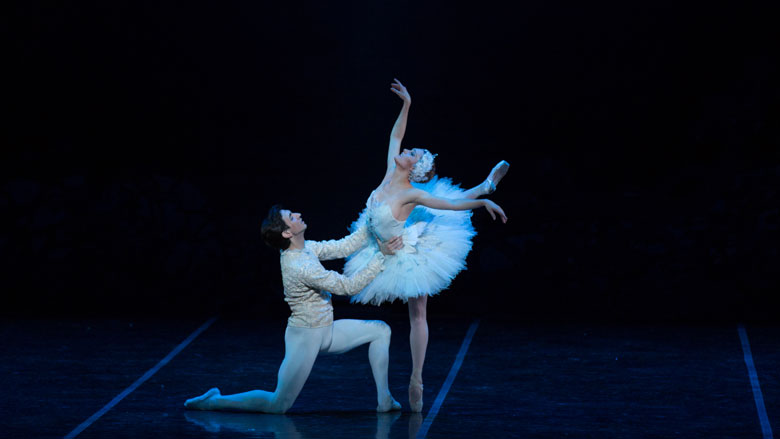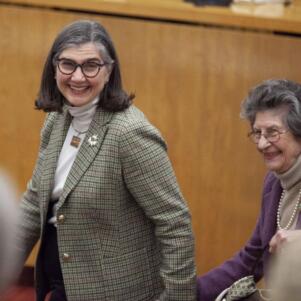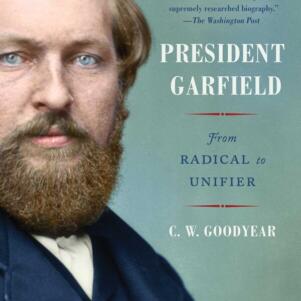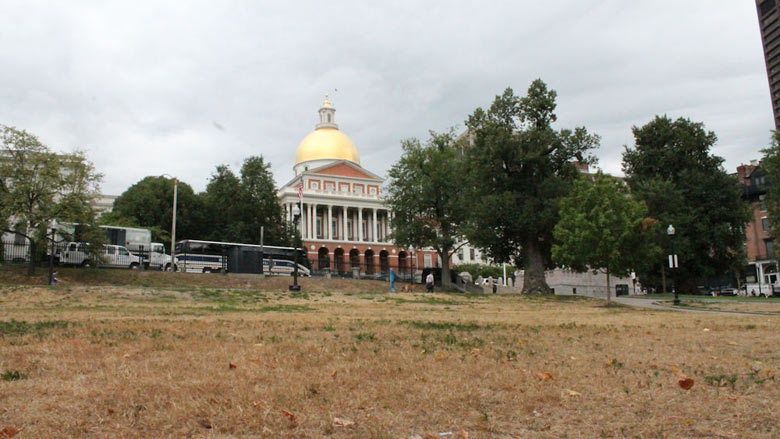The BLOG: Culture
The hidden history of Tchaikovsky’s Swan Lake solos
Mary Hierholzer | May 24, 2016

Ashley Ellis and Eris Nezha in Mikko Nissinen’s Swan Lake; photo by Rosalie O’Connor, courtesy of Boston Ballet
Ask anyone to hum a bit of Swan Lake, and they’ll give you that heart-wrenching Tchaikovsky theme we all know so well. It’s the epitome of classical ballet music and, arguably, one of the most recognizable scores in the entire classical music repertoire.
One of the most undervalued features of Swan Lake are Peter Tchaikovsky’s violin solos. These gems are not your run-of-the-mill solos. Instead of the usual brief dances that can be as short as 47 seconds, the three violin pieces in Swan Lake are, on average, about six minutes. They are very similar to operatic arias and duets. Tchaikovsky’s solos are lyrical, technically difficult, and melodically complex — only they’re just sung by violins rather than sopranos.
Written sometime between 1875-76, Swan Lake premiered about two years before the composer’s Violin Concerto in D Major was first performed. It begs the question of whether Tchaikovsky was experimenting with the violin to see what he could do later with a concerto.
But the result suggests he intended far more than a mere foray. In the case of Swan Lake, Tchaikovsky’s first ballet, the violins served a very good practical purpose. According to Boston Ballet Music Director and Principal Conductor Jonathan McPhee, the composition of Swan Lake’s violin solos marked a momentous point in ballet and musical history, indicating the time in which a violin — not a piano like we generally see in the ballet studio today — was used for musical accompaniment.
“Pianos gradually began to show up in the mid-1800s as a rehearsal tool in ballet studios, but it was far more common to find rehearsals and classes being played by either the harp or the solo violin (usually the concertmaster of the orchestra),” McPhee said. “Consequently, as new works were created, it was only natural that there would be intimate collaborations between these two solo instruments and the choreographer and dancers.”
We need only look as far as the works by Edgar Degas, the late 19th-early 20th-century impressionist painter famous for portraying scenes of ballet dancers rehearsing and performing. In pieces like “The Foyer at the Opera,” McPhee noted, Degas sometimes included a violinist in the scenes.

“The Foyer at the Opera” by Edgar Degas (Wikimedia)
While he composed the ballets, Tchaikovsky worked closely with choreographer Marius Petipa, who provided the composer with extremely detailed instructions for the music. With these guidelines, Tchaikovsky probably put a great deal of thought into the choreographic functions of his Swan Lake violin sections.
“Even though Tchaikovsky came to writing for ballet quite late in his career,” McPhee said, “he was a lifelong ballet fan and really knew the art form and what its true potential was in the world of ballet and musical theatre.”
Due to the choreographic and musical genius, the violin pieces contribute a unique effect to their respective scenes. The first, an andante-allegro pas de deux, was originally scored for Act I, but it was moved to Act III as the “Black Swan Pas de Deux” in an 1895 revision. This latter alteration is what we currently hear in Mikko Nissinen’s Boston Ballet version, which McPhee conducts.
Depending on the rendition, we hear the solos at various points in the ballet; some choreographers reorganize or even omit musical selections. The 1895 revision briefly separates this particular part, using the andante section as the “Black Swan Pas de Deux” duet, and the allegro section as Siegfried’s solo variation.
Act II features the “White Swan Pas de Deux,” another andante-allegro dance that develops into a stunning violin duet. It is far more tender and romantic than the previous section, taking place during Siegfried and Odette’s first encounter. The third solo, which appears during Act III’s character dances, is a vivacious Russian dance (regrettably, omitted from most current productions of Swan Lake, including Boston’s).
“The musical complexity Tchaikovsky brought to the world of ballet with his first ballet composition, Swan Lake, was really the bridge that brought the solo violin and harp to its ultimate height as solo instruments, as well as showing the need for a piano to handle the large scale symphonic music that he was writing for the orchestra,” McPhee said.
Interesting both aesthetically and historically, Tchaikovsky’s Swan Lake violin solos are worth hearing. Listen to them live in Boston Ballet’s final performance of Mikko Nissinen’s Swan Lake this week. Concert Master Michael Rosenbloom and Acting Concert Master Jodi Hagen will perform the solos.
For now, give a listen to these excellent recordings below:
Violinist Clio Gould performing the Andante-Allegro Pas de Deux with the Royal Philharmonic Orchestra, conducted by Barry Wordsworth (I swear by their recordings).
The Milan La Scala Orchesra performing the “White Swan Pas de Deux” in the La Scala Theatre Ballet’s production of Swan Lake (my personal favorite production), conducted by James Tuggle, and danced by Svetlana Zakharova (another personal favorite) and Roberto Bolle.
Violinist Clio Gould performing the “Russian Dance” with the Royal Philharmonic Orchestra, conducted by Barry Wordsworth.

Mary Hierholzer
Mary Hierholzer is a freelance journalist and Gordon College graduate.






